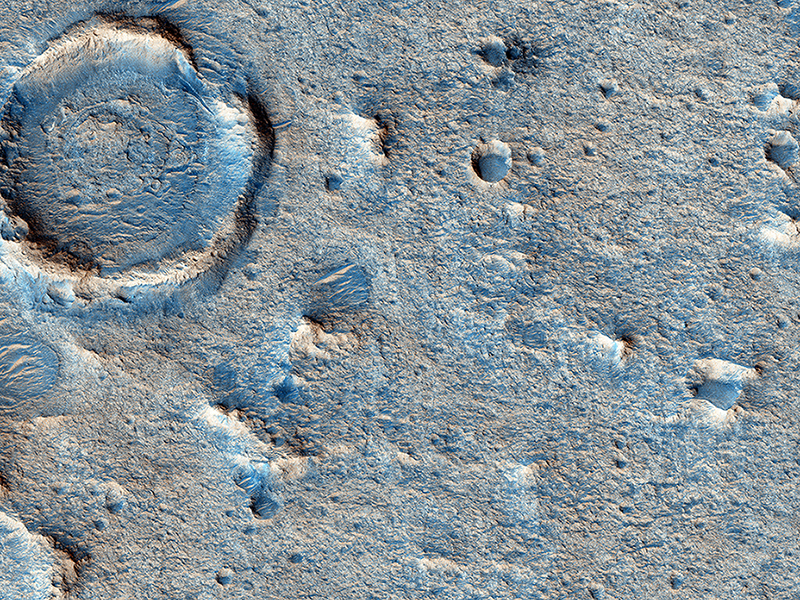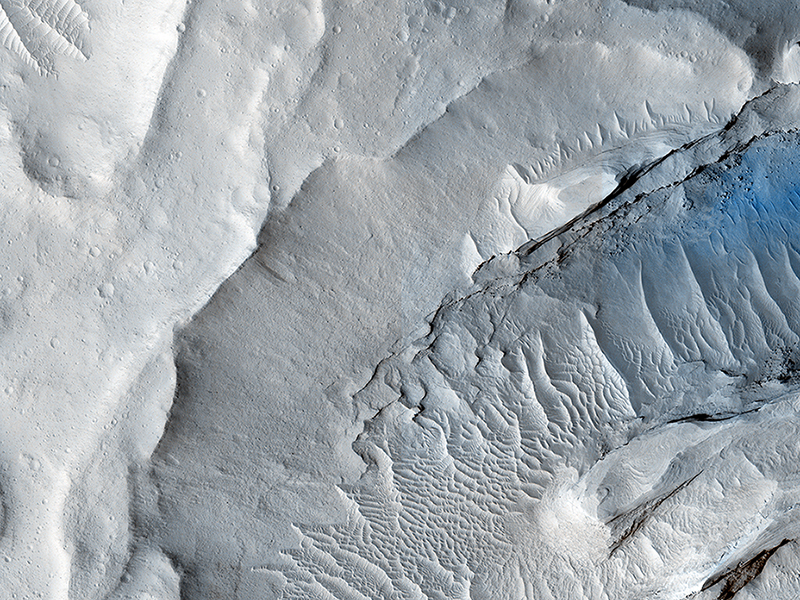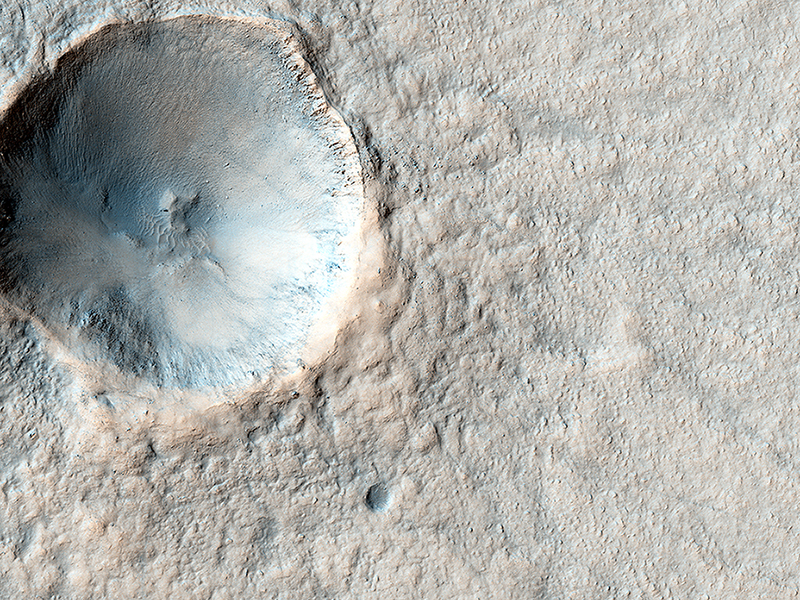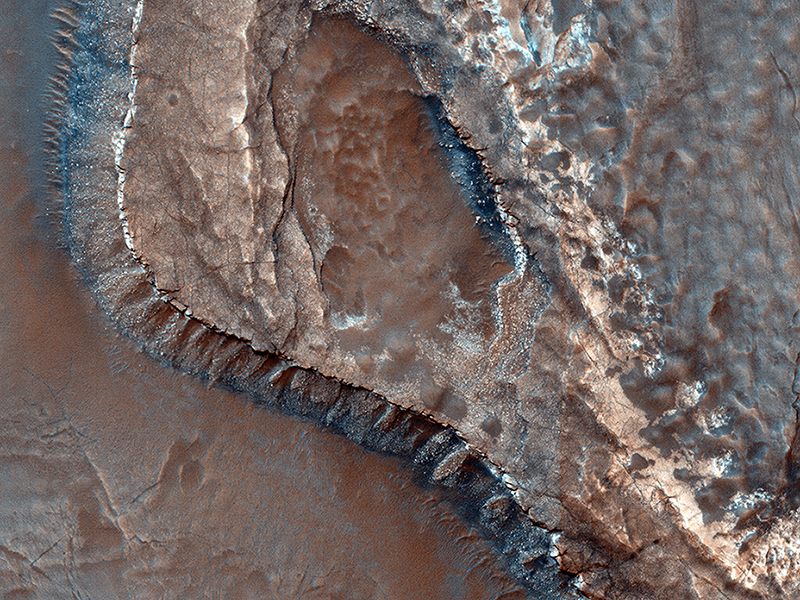John Bridges wrote:Clay-Rich Terrain in Oxia Planum: A Proposed ExoMars Landing Site (ESP_039154_1985) (HiClip)
Oxia Planum is an ancient (Noachian epoch) terrain situated to the east of Chryse Planitia at about 18 degrees north. The OMEGA infrared spectrometer on board Mars Express, and CRISM onboard the Mars Reconnaissance Orbiter, have identified iron-magnesium rich clays like smectite over hundreds of square kilometers.
This image uses HiRISE to show what the surface looks like and whether it is feasible to land a rover on it. In this instance the image was taken with the ExoMars rover in mind (Oxia Planum is one of the leading candidate sites for that mission) but the Mars 2020 mission is another possibility. The image shows that the landscape is flat in this area.
The origin of the clays—perhaps due to alteration of volcanic sediments—is of keen interest to researchers looking for a terrain where traces of life have been preserved and could be studied by a rover. Another issue that rover planners have to be aware of is the presence of dunes which could block the traverses of rovers, but this part of Oxia Planum appears benign in that respect as well.
HiRISE Science Team wrote:Searching for Clinoforms in a Possible Delta (ESP_039820_1750) (HiClip)
A delta is a pile of sediment dumped by a river where it enters a standing body of water. Evidence for deltas that formed billions of years ago on Mars has been mounting in recent years.
One line of evidence not yet investigated is to search for what are called clinoforms. In geology, a clinoform refers to a steep slope of sediment on the outer margin of a delta. This image seeks to test whether those features are visible and help confirm that Mars in ancient times had a standing body of water in this location.
For a bit more information on what a clinform looks like, see this page.
This is a stereo pair with ESP_031921_1750.
HiRISE Science Team wrote:Pedestal Crater Development (ESP_039936_1330) (HiClip)
In this image, we see an approximately 500-meter crater that is fairly fresh (in geological terms), but the ejecta is already high-standing. Could this be an indication of early stage of pedestal development?
A pedestal crater is when the ejecta from an impact settles around the new crater and is more erosion-resistant than the surrounding terrain. Over time, the surrounding terrain erodes much faster than the ejecta; in fact, some pedestal craters are measured to be hundreds of meters above the surrounding area.
HiRISE has imaged many other pedestal craters before, and the ejecta isn't always symmetrical, as in this observation.
Henrik Hargitai and Ginny Gulick wrote:A Channel System and Patterned Ground near Hellas Basin (ESP_040601_1460) (HiClip)
In this image, we explore the southwestern floor of a 50-kilometer diameter unnamed crater, about 100 kilometers northeast of Hellas Basin.
The crater’s rim is breached (see Google context image below) on both the north and south by a valley system that previously flowed across the crater floor, leaving behind an interesting array of channel patterns and deposits as it transported water and sediments into and out of the crater.
In this image, we see a portion of the channel system along the southwestern crater floor near where the valley breaches the southern rim. The darker-toned surface has a pattern similar to the texture of a basketball, and blankets the region both in the channel belt and in the basin below the cliffs. Superposed on this patterned surface are clusters of larger, circular mounds that may be related to the thawing and freezing of ice-rich sediment, which is unusual at this relatively low latitude. Extensional cracks and clusters of pits make this topography more complicated.
The southern part of this image reveals a prominent irregular scarp with light-toned layered deposits exposed along the margin beneath this textured surface. The light-toned layers look like an ancient mosaic in some areas as they are irregularly fractured and brecciated. Individual blocks and large boulders of this material are visible at full-resolution near the scarp, just about to fall and already lying on the debris slopes below the scarp. Some are brighter than the others: these may be dust-free, indicating that they have detached from the cliff more recently.
This is a stereo pair with ESP_041036_1460.
Credit: NASA/JPL/University of Arizona
<< Previous HiRISE Update



